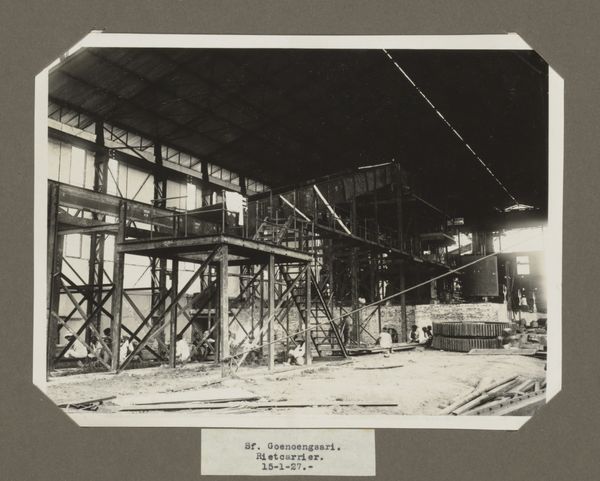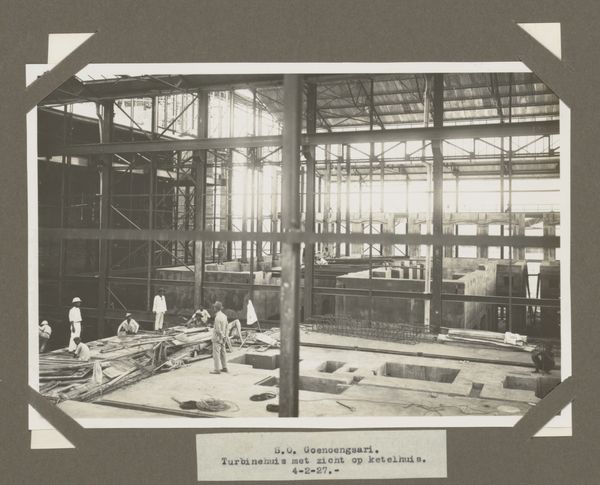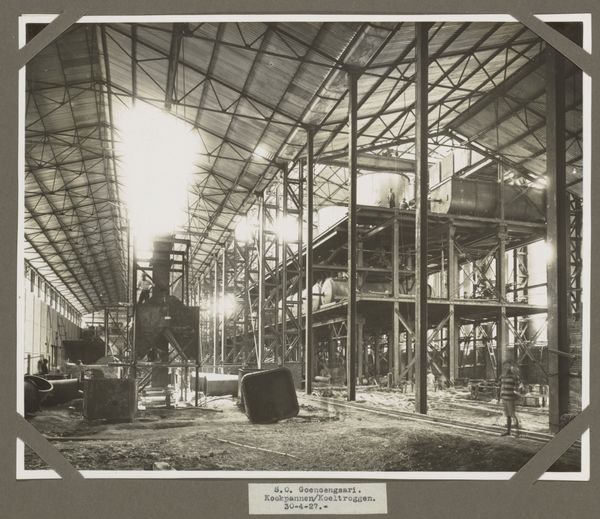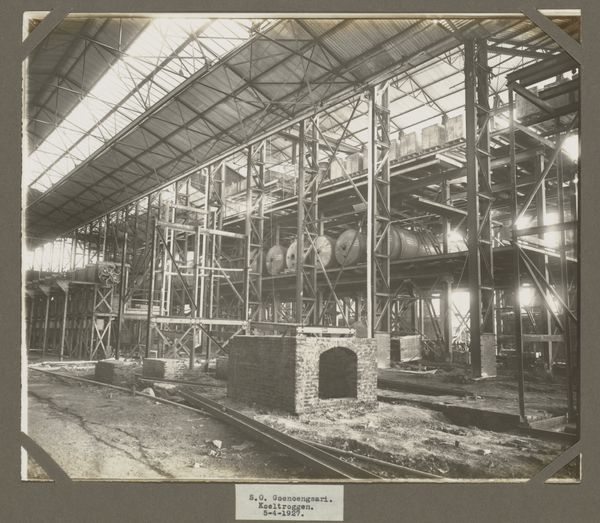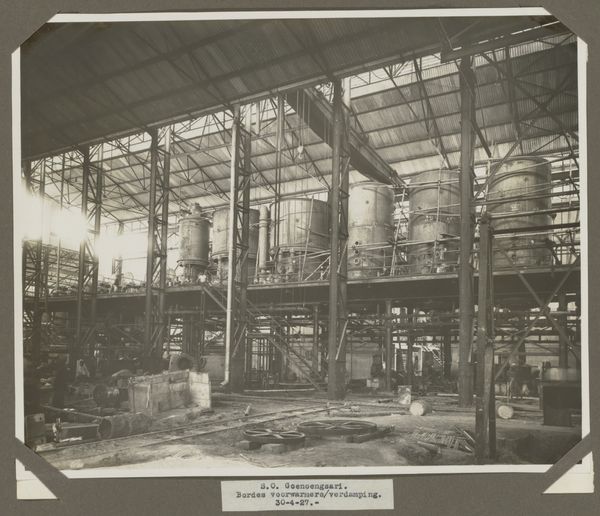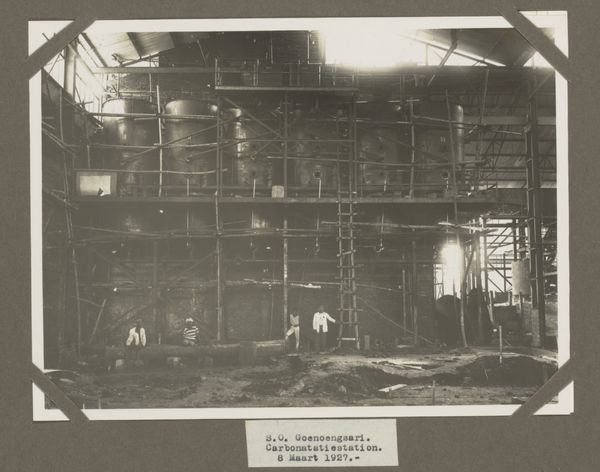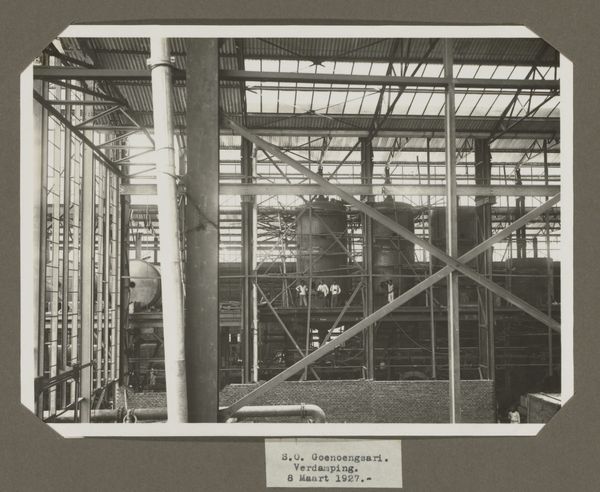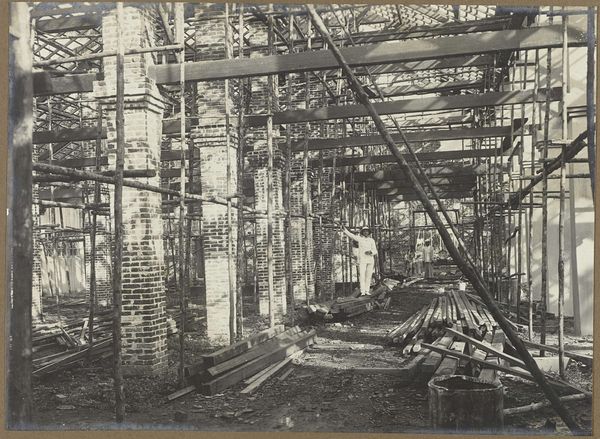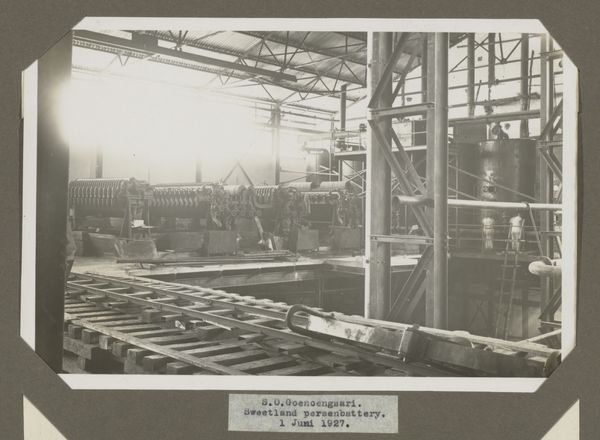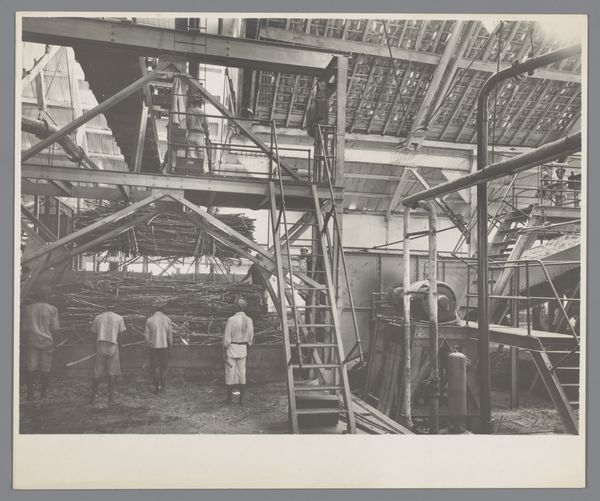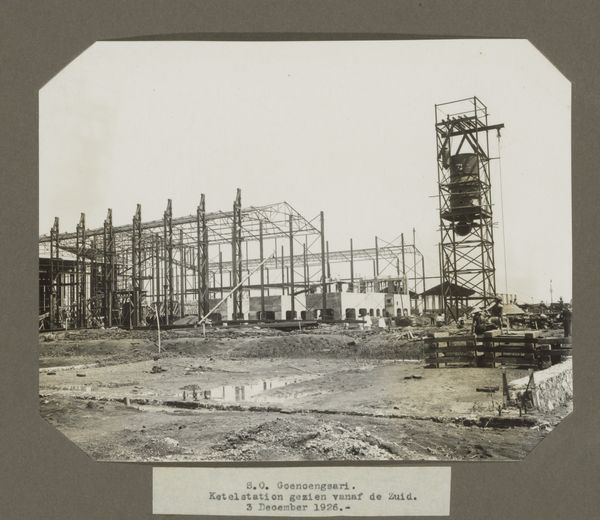
print, photography, gelatin-silver-print
#
precisionism
# print
#
archive photography
#
photography
#
gelatin-silver-print
#
cityscape
Dimensions: height 174 mm, width 232 mm
Copyright: Rijks Museum: Open Domain
Curator: Here we have a gelatin-silver print dating to 1927, currently residing at the Rijksmuseum. Its full title reads, "S.O. Goenoengsari. Turbinehuis. 8 Maart 1927." Editor: My first impression? It feels like the bones of a colossal beast. Stark, metallic, and yet… somehow serene? Curator: Serene, perhaps, in its geometry. Note the composition: the sharp diagonals of the framework, the repetitive verticality of the support beams, and the way the light dissects the interior space. It's a superb example of Precisionism. Editor: Do you think the adoption of Precisionism reflected the social and political atmosphere back in 1927? The interwar period, rapid industrial expansion... Did the adoption of stylistic cues indicate a collective fascination with modernity? Curator: Undeniably. It romanticizes the machine, turning it into an aesthetic object, rather than considering labor relations. This photograph flattens perspective, rendering depth ambiguous and accentuating the abstract qualities of the industrial landscape. Editor: So, what's deliberately absent is the people inside these "bones?" Curator: Precisely. And, in their absence, there is also no reflection on labor practices during Dutch colonialism in Indonesia. However, let's also appreciate the remarkable tonal range achievable with gelatin-silver printing. It amplifies the textures of the metal and concrete. Editor: You know, understanding the artist's intention feels less relevant than grasping the context in which it's seen and understood. The photograph itself as a relic of the cultural fascination and material condition. Curator: Well, both readings enrich the experience of the artwork. The meticulous balance, combined with our present-day critical awareness of the photographic subject—a colonial landscape, for instance. It allows us to find something striking in an otherwise stark presentation of mechanical power. Editor: Ultimately, viewing it makes me ponder the relationship between art, industry, and the societies they co-evolve within.
Comments
No comments
Be the first to comment and join the conversation on the ultimate creative platform.
